Abraham Walkowitz (1878-1965)
Get a Abraham Walkowitz (1878-1965) Certificate of Authenticity for your painting (COA) for your Abraham Walkowitz (1878-1965) drawing.
For all your Abraham Walkowitz (1878-1965) artworks you need a Certificate of Authenticity (COA) in order to sell, to insure or to donate for a tax deduction.
Getting a Abraham Walkowitz (1878-1965) Certificate of Authenticity (COA) is easy. Just send us photos and dimensions and tell us what you know about the origin or history of your Abraham Walkowitz (1878-1965) painting or drawing.
If you want to sell your Abraham Walkowitz (1878-1965) painting or drawing use our selling services. We offer Abraham Walkowitz (1878-1965) selling help, selling advice, private treaty sales and full brokerage.
We have been authenticating Abraham Walkowitz (1878-1965) and issuing certificates of authenticity since 2002. We are recognized Abraham Walkowitz (1878-1965) experts and Abraham Walkowitz (1878-1965) certified appraisers. We issue COAs and appraisals for all Abraham Walkowitz (1878-1965) artworks.
Our Abraham Walkowitz (1878-1965) paintings and drawings authentications are accepted and respected worldwide.
Each COA is backed by in-depth research and analysis authentication reports.
The Abraham Walkowitz (1878-1965) certificates of authenticity we issue are based on solid, reliable and fully referenced art investigations, authentication research, analytical work and forensic studies.
We are available to examine your Abraham Walkowitz (1878-1965) painting or drawing anywhere in the world.
You will generally receive your certificates of authenticity and authentication report within two weeks. Some complicated cases with difficult to research Abraham Walkowitz (1878-1965) paintings or drawings take longer.
Our clients include Abraham Walkowitz (1878-1965) collectors, investors, tax authorities, insurance adjusters, appraisers, valuers, auctioneers, Federal agencies and many law firms.
We perform Abraham Walkowitz art authentication, appraisal, certificates of authenticity (COA), analysis, research, scientific tests, full art authentications. We will help you sell your Abraham Walkowitz or we will sell it for you.
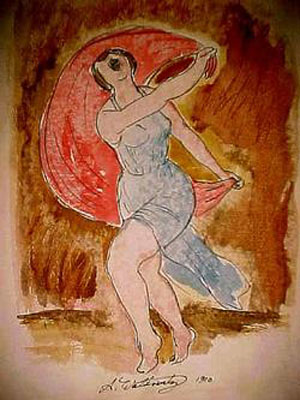
Abraham Walkowitz was an American painter grouped in with the Early American Moderns working in the Modernist style. He was born in Siberia, Russia and emigrated with his mother to the United States in his early childhood where he stuided at the National Academy of Design in New York and the Académie Julian in Paris under Jean Paul Laurence. Walkowitz and his contemporaries gravitated around photographer Alfred Stieglitz’ 291 Gallery, originally titled the Little Galleries of the Photo-Secession, where the forerunners modern art in America gathered and where many European artists were first exhibited in the United States. During the 291 years, Walkowitz worked closely with Stieglitz as well as Arthur Dove, Marsden Hartley, and John Marin (often referred to as “The Stieglitz Quartet”).
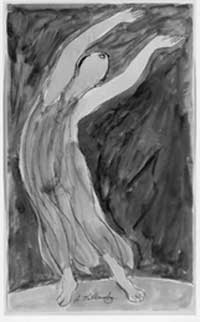
Walkowitz was drawn to art from childhood. In a 1958 oral interview with Abram Lerner, he recalled: “When I was a kid, about five years old, I used to draw with chalk, all over the floors and everything… I suppose it’s in me. I remember myself as a little boy, of three or four, taking chalk and made drawings.” In early adulthood, he worked as a sign painter and began making sketches of immigrants in New York’s Jewish ghetto where he lived with his mother. He continued to pursue his formal training, and with funds from a friend traveled to Europe in 1906 to attend the Académie Julian. Through introductions made by Max Weber, it was here that he met Isadora Duncan in Auguste Rodin’s studio, the modern American dancer whom had captured the attention of the avant-garde. Walkowitz went on to produce more than 5,000 drawings of Duncan.
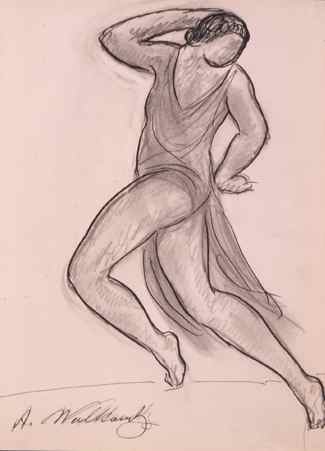
Walkowitz’ approach to art during these years stemmed from European modernist ideas of abstraction, which were slowly infiltrating the American art psyche at the turn of the century. Like so many artists of the time, Walkowitz was profoundly influenced by the 1907 memorial exhibition of Cézanne’s work in Paris at the Salon d’Automne. Artist Alfred Werner recalled that Walkowitz found Cézanne’s pictures to be “simple and intensely human experiences.” Working alongside other Stieglitz-supported American modernists, Walkowitz refined his style as an artist and produced various abstract works.
Although Walkowitz drew influences from modern European masters, he was cautious not to be imitative. Artist and critic Oscar Bluemner recognized this quality in Walkowitz’s work, citing the differences between the highly influential writings of Kandinsky and Walkowitz’ style. He wrote: “Walkowitz is impelled by the ‘inner necessity’: Kandinsky, however, like the other radicals, appears not to proceed gradually and inwardly, but with a mind made up to commit an intellectual feat—which is not art.”
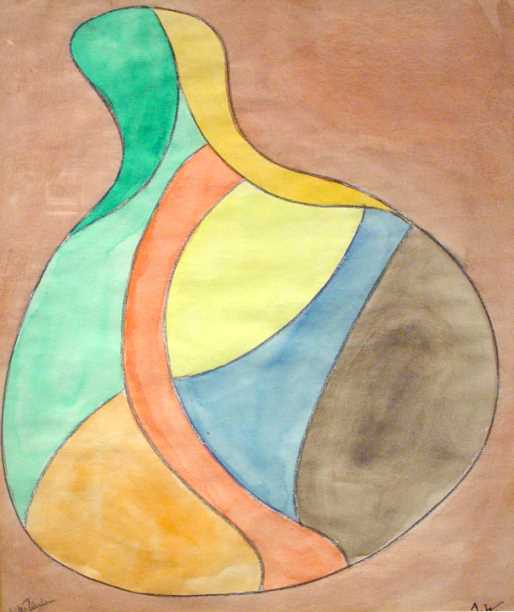
Walkowitz first exhibited at 291 in 1911 after being introduced to Stieglitz through Hartley, and stayed with the gallery until 1917. During the 291 years, the climate for modern art in America was harsh. Until the pivotal Armory Show of 1913 had occurred which Walkowitz was involved with and exhibited in, modern artists importing radical ideas from Europe were received with hostile criticism and a lack of patronage.

In 1927, Isadora Duncan echoed the lines of Walt Whitman in her essay I See America Dancing, writing, “When I read this poem of Whitman’s I Hear America Singing I, too, had a Vision: the Vision of America dancing a dance that would be the worthy expression of the song Walt heard when heard America singing.” Duncan was the quintessence of modernism, shedding the rigid shackles of the balletic form and exploring movement through a combination of classical sculpture and her own inner sources. She described this search: “I spent long days and nights in the studio seeking that dance which might be the divine expression of the human spirit through the body’s movement.” For Duncan, dance was a distinctly personal expression of beauty through movement, and she maintained that the ability to produce such movement was inherently contained within the body.
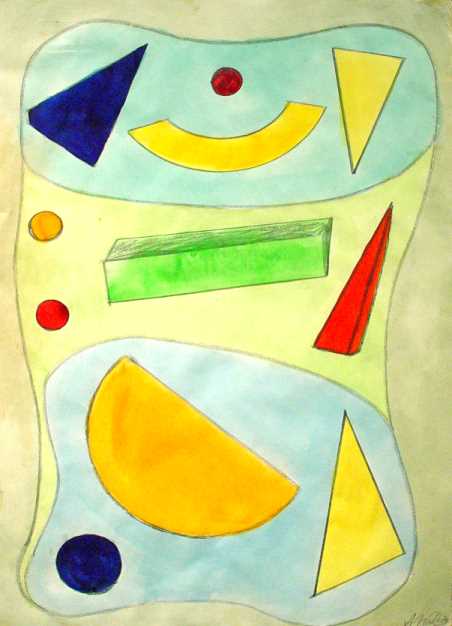
Abraham Walkowitz was one of many artists captivated by this new form of movement. The Duncan drawings can be interpreted as representations of Walkowitz’s loftiest goals. Composing thousands of these drawings would prove to be one of the most effective outlets for his artistic agenda due to the similarities between the artistic ideals and preferred aesthetic shared by Walkowitz and Duncan. He was also able to draw from the same subject repeatedly and extract a different experience with each observation. Sculptors most readily recognized this trait in Duncan; there was a particular quality of her dance which appeared readily artistic, yet not static. Dance critic Walter Terry described it in 1963 as, “Although her dance inarguably sprang from her inner sources and resources of motor power and emotional drive, the overt aspects of her dance were clearly colored by Greek art and the sculptor’s concept of the body in arrested gesture promising further action. These influences may be seen clearly in photographs of her and in the art works she inspired.”
In each drawing, a new observation is recorded from the same subject. In the Foreword to A Demonstration of Objective, Abstract, and Non-Objective Art, Walkowitz wrote in 1913, “I do not avoid objectivity nor seek subjectivity, but try to find an equivalent for whatever is the effect of my relation to a thing, or to a part of a thing, or to an afterthought of it. I am seeking to attune my art to what I feel to be the keynote of an experience.” The relaxed fluidity of his action drawings represent Duncan as subject, but ultimately reconceived the unbound movement of her dance and translates the ideas into line and shape, ending with a completely new composition.
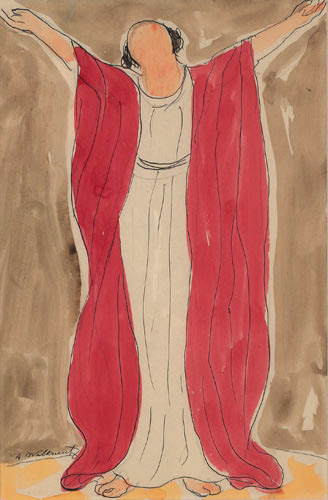
His interest in recording the “keynote” of experience rather than producing an objective representation of a subject is central to the composition of the Duncan drawings. The fluidity of the lines function simultaneously as recognizable shapes of the human body, but also trace the pathways of the dancer’s movements. Duncan herself wrote in 1920, “…there are those who convert the body into a luminous fluidity, surrendering it to the inspiration of the soul.” Placed into a different context, this passage could function as a description of Walkowitz’s art; it is in fact taken from her essay The Philosopher’s Stone of Dancing wherein she discusses techniques to most effectively express the purest form of movement.
Walkowitz’s dedication to use Duncan as a subject extended well past her untimely death in 1927. His body of work is a testament to Duncan’s art and their shared convictions toward modernism and the liberty to express oneself in a personal, spiritual fashion.

While never attaining the same level of fame as his contemporaries, the significance of Walkowitz’ work has been re-visited by art historians in recent years, with exhibitions cropping up at institutions such as The Neuberger Museum of Art, The Zabriskie Gallery, and other university galleries. Most notable were his early abstract cityscapes and the collection of over 5,000 drawings of Isadora Duncan which he produced over the course of his life.
Reviews
1,217 global ratings
5 Star
4 Star
3 Star
2 Star
1 Star
Your evaluation is very important to us. Thank you.
